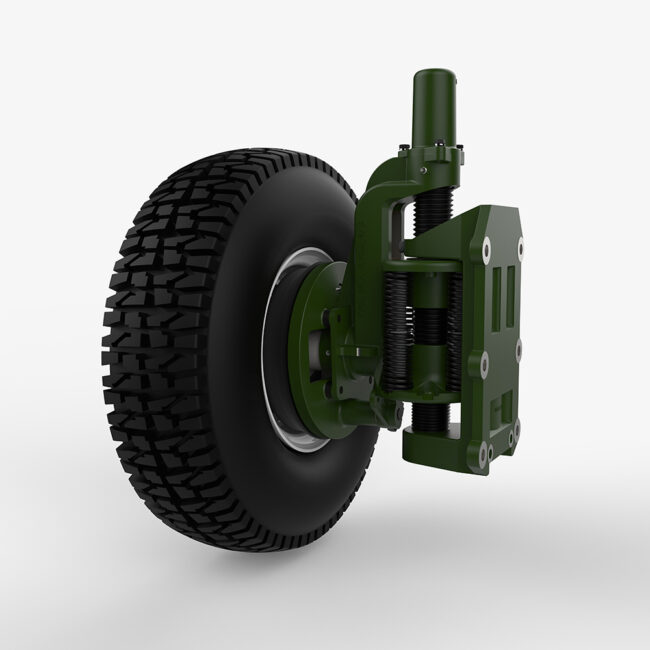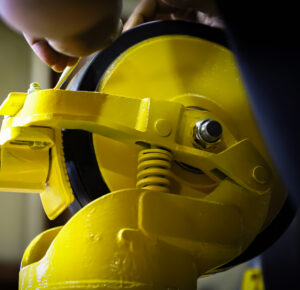
Shock transmission and shock mitigation in wheel suspension and shock absorbing

Shock transmission and shock mitigation factors
During the preliminary design stages of Aerospace and Ground Equipment, determining the degree of shock transmitted to the payload is a major consideration.
This concerns:
- The reduction of the highest anticipated input shock to the system to a level that the equipment can withstand
- The analysis of the effects of periodic input shocks
The Aerol Sam Suspension Unit, THE BANJO MOUNT, CUSHION TREAD WHEELS, PROFILE TIRES, and SHOCK shock-absorbing casters are all designed to provide the optimum combination of features to reduce shock transmissibility and minimize resonant response. Determination of the highest tolerable input shock involves considering the sprung weight (the vehicle chassis and payload), speed, the input pulse amplitude and shape, and the system’s natural frequency.
Vibration and shock dampening
 The vibration and shock-dampening characteristics of Aero wheel suspension assemblies and shock-absorbing caster are extremely important factors in mitigating shocks imposed on AGE equipment. The vibration-dampening characteristic or dampening ratio results from the sprung weight, the system friction, the inherent dampening characteristics of pneumatic and solid rubber tires, and the dampening characteristics of the metallic components of the suspension assembly.
The vibration and shock-dampening characteristics of Aero wheel suspension assemblies and shock-absorbing caster are extremely important factors in mitigating shocks imposed on AGE equipment. The vibration-dampening characteristic or dampening ratio results from the sprung weight, the system friction, the inherent dampening characteristics of pneumatic and solid rubber tires, and the dampening characteristics of the metallic components of the suspension assembly.
Both ductile iron and cast aluminum, used exclusively for the structural components of outdoor heavy duty caster wheels and suspension systems, possess excellent dampening properties. It should be remembered that while the dampening properties of a system increase the shock transmissibility, an undamped system would respond violently to an exciting frequency close to the natural frequency, and input shock amplitudes over the deflection capacity of the spring system could not be tolerated.
In practice, dampening ratios of 0.15 to 0.20 are desirable, and the dampening ratios of Aerol suspension units and shock absorbing cantilevered caster fall within this range.
Sprung weight and dampening characteristics of a tire
As stated, the sprung weight and dampening characteristics of the tire contribute to the total dampening ratio of the suspension system. If the shock absorbing Caster capability of the tire is considered isolated from the remainder of the system, then only that portion of the tire in contact with the road bet is unsprung weight. In addition, all parts of the suspension system, including the wheel and most of the tire, contribute to the total inertia force that opposes the input shock force of an obstacle striking the wheel.
It is readily seen that a shock absorbing cantilevered caster suspension system with solid rubber or pneumatic tire wheels represents a differential spring system. That’s because the tire attenuates a portion of the input shock, a portion of the remainder is absorbed in the spring system, and only the residual shock is transferred to the payload. In practice, the tire absorbs the input shock loads of many low to medium vertical profile obstacles and short pulse duration with negligible shock levels imposed on the spring system.




